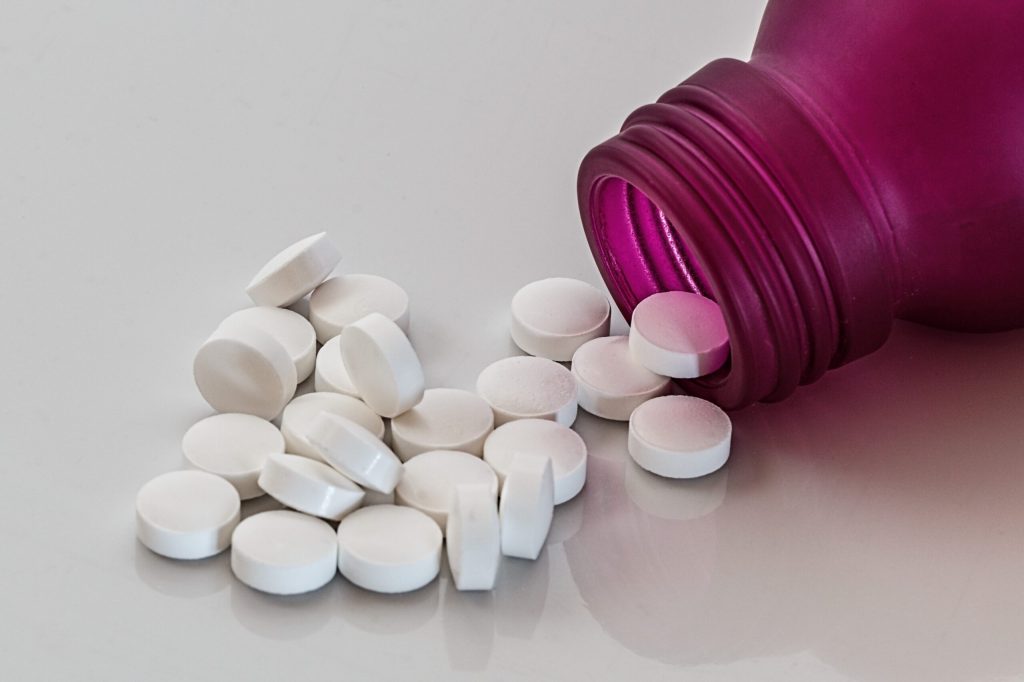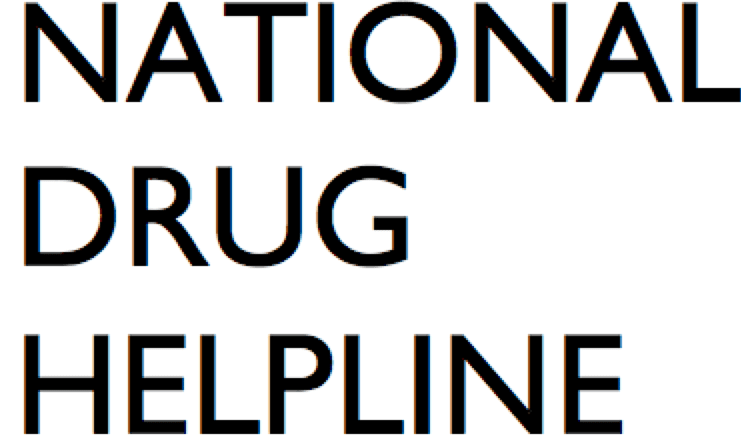The United States is in the midst of an opioid epidemic that has affected countless lives. Understanding its causes and consequences is crucial if you or someone you know is impacted by opioid misuse. A drug addiction hotline in Utah can help you explore effective strategies for prevention, harm reduction, and treatment to combat opioid abuse.
The National Drug Helpline is a toll-free number 1-844-289-0879 that operates around the clock. Our goal is to give you immediate access to updated information about addiction treatment in Utah. All calls to the helpline are completely confidential and are answered by trained professionals. We can connect you with local resources and offer guidance in a safe, non-judgmental, and private space.
Call 1-844-289-0789 today to discuss any concerns and get answers to your questions about opioid abuse, other drug abuse, or alcohol abuse. We guarantee complete privacy for yourself or your loved one. Find drug and alcohol treatment facilities in Salt Lake City, West Valley City, West Jordan, Provo, Orem, and other communities in Utah.
UTAH SUBSTANCE ABUSE RESOURCES
- Utah Department of Health and Human Services –Substance Use and Mental Health
- Alcoholics Anonymous Meetings in Utah
- Utah Drug Monitoring Initiative
- Utah Drug Use Trends
- Utah DUI Laws
SUBSTANCE ABUSE BY YOUTH IN UTAH
The Utah Youth Risk Behavior Survey 2021 showed the following findings among 9th, 10th, 11th, and 12th graders in the state: [1]
ALCOHOL USE
- Percentage of students who had their first alcoholic drink before age 13 years: 7.7%
- Percentage of students who currently drank alcohol: 8.1%
- Percentage of students who were currently engaged in binge drinking on at least 1 day in the past 30 days: 3.6%
- Percentage of students who go the alcohol they drank by someone giving it to them: 38.0%
- Percentage of students who reported they had 10 or more drinks in a row within a couple of hours in the past 30 days: 0.9%
MARIJUANA USE
- Percentage of students who ever used marijuana: 16.8%
- Percentage of students who tried marijuana for the first time before age 13 years: 3.1%
- Percentage of students who used currently used marijuana in the past 30 days: 7.8%
- Percentage of students who ever used synthetic marijuana (spice, K2, black mamba, fake weed): 3.3%
PRESCRIPTION PAIN MEDICATION MISUSE
- Percentage of students who ever took prescription pain medications such as codeine, Vicodin, OxyContin, or Percocet without a doctor’s prescription or differently than prescribed: 8.2%
EXPOSURE TO DRUGS AND ALCOHOL
- Percentage of students who ever used cocaine: 1.6%
- Percentage of students who ever used inhalants (glue, aerosol cans, paints, sprays): 6.4%
- Percentage of students who ever used heroin (smack, junk, China White): 0.9%
- Percentage of students who ever used methamphetamines (speed, crystal meth, ice, crank): 1.2%
- Percentage of students who ever used ecstasy: 1.8%
- Percentage of students who ever injected an illegal drug: 1.2%
- Percentage of students who were ever offered, given, or sold an illegal drug on school property: 20.8%
SUBSTANCE ABUSE IN UTAH
The Substance Abuse and Mental Health Services Administration (SAMHSA) reports the following with regards to substance use in Utah: [2]
YOUTH AGED 12-17 YEARS
- Past-month marijuana use was reported by 3.6% of adolescents in 2017-2019 compared to 4.2% in 2002-2004. During a similar timeframe, the US national average decreased from 7.9% in 2002-2004 to 6.8% in 2017-2019.
- Past-month alcohol use was reported by 4.3% of youth in 2017-2019 compared to 11.1% in 2002-2004. The US national average also showed a downward trend from 17.6% in 2002-2004 to 9.4% in 2017-2019.
- Past-month illicit drug use was reported by 5.1% of Utah teens aged 12-17 years in 2017-2019 compared to 4.0% in 2015-2017. The US national average was stable at 8.2% during this time.
- Past-year initiation of substances (first lifetime use) was reported by youth as follows during 2017-2019: Alcohol 4.6% (US average 9.3%), marijuana 3.3% (US average 5.2%), and cigarettes 0.9% (US average 2.3%).
Marijuana and alcohol use among adolescents in Utah have shown positive trends with decreased usage in 2019 compared to 2002. However, illicit drug use has increased during this time period, although it is still significantly lower than the US national average.
YOUNG ADULTS AGED 18-25 YEARS
The data for young adults aged 18-25 years in Utah is as follows:
- Past-year marijuana use was reported by 25.9% of young adults in Utah in 2017-2019 compared to 18.2% in 2002-2004. During a similar timeframe, the US national average increased from 28.7% in 2002-2004 to 35.0% in 2017-2019.
- Past-year marijuana use disorder was reported in 4.1% of young adults aged 18-25 years in Utah in 2017-2019, compared to 3.8% in 2002-2004. The US national average changed from 6.0% in 2002-2004 to 5.6% in 2017-2019.
- Past-year opioid use disorder was reported in 0.8% of young adults in Utah in 2017-2019 compared to 2.0% in 2015-2017. The US national average changed from 1.3% in 2015-2017 to 1.0% in 2017-2019.
- Past-year illicit drug use disorder was reported in 5.3% of Utah residents aged 18-25 years in 2017-2019 compared to 5.8% in 2015-2017. The US national average was around 7.2% to 7.5% during this time period.
- Past-month binge alcohol use was reported by 21.8% of young adults in 2017-2019 compared to 24.3% in 2015-2017. The US national average in 2017-2019 was 35.4% showing binge alcohol use in Utah is considerably lower than the country as a whole.
- Past-year alcohol use disorder among young adults aged 18-25 was reported in 6.4% of Utah residents in 2017-2019, compared to 10.5% in 2002-2004. The US national average for 2017-2019 was 9.8%. Utah therefore has a lower percentage of young adults battling alcohol use disorder compared to the US average for all states.
- Past-year substance use disorder was reported in 9.8% of young adults aged 18-25 years in Utah in 2017-2019 compared to 9.9% in 2015-2017. The national average has hovered between 15.1% and 14.7% during this time.
UTAH RESIDENTS 12 YEARS OF AGE AND OLDER
The Behavioral Health Barometer also found the following for 2017-2019 in Utah residents aged 12 years and older:
- Past-year tobacco use: 16.0% (US average 26.8%)
- Past-year marijuana use: 11.3% (US average 16.2%)
- Past-year marijuana use disorder: 1.2% (US average 1.6%)
- Past-year heroin use: 0.24% (US average 0.30%)
- Past-year prescription painkiller misuse: 3.6% (US average 3.7%)
- Past-year opioid use disorder: 0.7% (US average 0.7%)
- Past-year illicit drug use disorder: 2.8% (US average 2.9%)
- Past-year alcohol use disorder: 3.8% (US average 5.3%)
- Past-year substance use disorder: 5.7% (US average 7.4%)
- Number of people enrolled in substance use treatment (single day counts for 2019): 29,186
- Number of people enrolled in opioid treatment programs (single day counts for 2019): 2,719
- Problems among people enrolled in treatment: 48.8% drug problem only, 15.2% alcohol problem only, 36.0% both drug and alcohol problems

UNDERSTANDING THE OPIOID EPIDEMIC IN AMERICA
Causes
The opioid epidemic in the US has multiple causes, including overprescription of opioid pain medications, increased availability of potent synthetic opioids, and socioeconomic factors. For example, Utah had an opioid prescription rate of 43.8 in 2020, meaning nearly 44 opioid prescriptions were dispensed for every 100 persons (the national average was 46.8 in 2023). [3]
You may have encountered opioids in the form of prescription painkillers such as oxycodone and hydrocodone or the illegal drug heroin. Understanding the roots of the crisis is essential to addressing the issue.
Prevention
Prevention is key to tackling the opioid epidemic. You should consider the following steps to keep yourself and your loved ones safe:
Prescription Medication Awareness: Be aware of the risks associated with prescription opioid painkillers. Do not hesitate to ask your healthcare providers about alternative pain management options. Use opioid medications exactly as prescribed by a healthcare professional.
Proper Medication Disposal: Learn how to safely dispose of unused prescription opioids to prevent them from falling into the wrong hands.
Education: Educate yourself and your loved ones about the dangers of opioid misuse. Awareness can be a powerful tool to prevent opioid abuse.
Access to Naloxone: Naloxone is a rescue medication that can reverse potentially fatal opioid overdoses. If someone in your household uses opioid drugs, this life-saving medication should be readily available and you should know how to administer it.
Harm Reduction: Harm reduction strategies aim to minimize the negative consequences of opioid misuse. They include:
- Needle exchange programs that provide clean syringes to reduce the risk of infections and promote safe injection practices.
- Supervised injection sites that offer a safe environment for individuals to use drugs with trained staff on hand to prevent overdoses.
- Access to treatment for opioid use disorder, such as medication-assisted treatment (MAT) with methadone or buprenorphine.
Treatment
Effective treatment is crucial for recovery from opioid addiction. Treatment modalities may include:
Medication-Assisted Treatment (MAT): It combines medication with psychotherapy and counseling to help reduce cravings and withdrawal symptoms. It can be a lifeline for people with opioid use disorder.
Behavioral Therapy: Cognitive-behavioral therapy (CBT) and contingency management therapy are designed to address the psychological aspects of addiction and help you develop healthier coping strategies.
Support Groups: Support from peers who have experienced similar struggles can be invaluable in recovery from opioid abuse. Twelve-step programs like Narcotics Anonymous provide a sense of community and encouragement.
Access to Mental Health Services: Many people with opioid use disorder have co-occurring mental health conditions. Dual diagnosis and treatment for addiction and mental health issues is vital for successful recovery.
Holistic Approaches: Many people find that holistic approaches such as yoga, meditation, and acupuncture make recovery from opioid abuse easier.
Recovery from drug abuse is a lifelong journey and relapses can occur. Long-term recovery requires patience and persistence. If you or someone you know is struggling with opioid misuse, seeking professional help can be a significant step towards a healthier, drug-free life. You are not alone – the National Drug Helpline at 1-844-289-0879 can help you find resources and strategies to support you in your journey to recovery.
- Centers for Disease Control and Prevention. Utah Youth Risk Behavior Survey 2021. Available online. Accessed on September 9, 2023.
- SAMHSA. Behavioral Health Barometer Utah. Available online. Accessed on September 9, 2023.
- Centers for Disease Control and Prevention. Opioid Dispensing Rate Maps. Available online. Accessed on April 8, 2025.
Last updated: April 8, 2025
